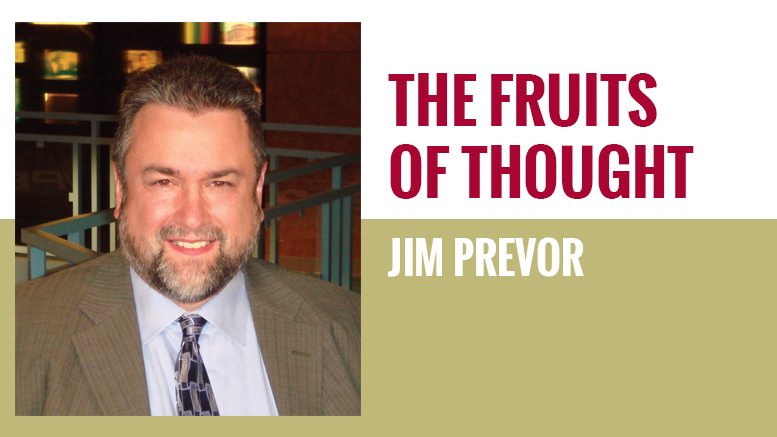Innovation Suffers At The Hands Of Private Label
March 3, 2021 | 4 min to read
The future of the produce industry hinges on innovation and effective marketing to entice consumers seeking unique flavor profiles. However, retailers increasingly favor private label products, diminishing margins for growers and marketers, which hampers their ability to invest in R&D and promote innovations. The industry's growth depends on retailers understanding that prioritizing short-term gains over producer margins ultimately undermines long-term consumer satisfaction and market success, paralleling a choice between innovation and short-lived profits.

Originally printed in the February 2021 issue of Produce Business.
The prosperity of the produce industry depends crucially on two things: First, continuous improvement in the product offered to consumers: Better taste, innovative varieties and other consumer-pleasing attributes, such as unique flavor profiles. Second, the ability to market and thus communicate to consumers these innovations.
In the fright of the pandemic, these attributes became hidden as consumers felt the need to stock up, fearing they might be not able to get out again to buy their favorites. Yet, as the pandemic recedes, we can expect consumers to be willing to seek out and demand innovative varieties that offer new flavor profiles and other unique attributes.
That can only be achieved if retailers are structured to highlight and offer these flavor and broader product innovations.
Alas, though the future of the produce industry hinges on product innovation and associated branding and marketing — and we can easily imagine a future of continuous improvement for the industry in which higher volume and higher prices are the result of increased per capita purchasing that is driven by such innovation and marketing resulting — it is also true that retail, that crucial link to the consumer, sees its own future quite differently.
Retailers, and this is driven at levels above retail produce executives, see the future as one of private label. Partly driven by their own limitations in marketing against deep discounters, such as Aldi and Lidl, which emphasize private label, and partly driven by their fear of being caught by suppliers who offer unique products and so can set the price and margin, retailers are increasingly blocking the margin enhancement that growers and marketers require to justify the costs of innovation.
Retailers are increasingly blocking the margin enhancement that growers and marketers require to justify the costs of innovation
Now admittedly private label today is different than that of years past. It is true that many retailers have a range of private labels, offering different levels and types of product. High-end, low-end, organic, ethnic… private label now runs the gamut. Indeed, many players offer their private label under many different brands rather than using the retail name.
But in each category, under each private label, the retail interest remains the same: To offer consumers a product that is less expensive than the branded version of that product while offering the retailer a chance to increase its own margins. How does this work? How can retailers have higher margins, while consumers get lower prices?
In some products, retailers do this by marketing items that look like the branded versions, but lack important attributes. Allbirds blasted Amazon for making sneakers that looked like its own but lacked sustainable attributes that Allbirds paid to put in its shoes.
In produce, though, the challenge is different. Growers and marketers in the fresh produce category rarely have the kind of marketing budgets that allow them, on their own, to educate consumers on a mass scale. When Allbirds first launched, the company spent 20% of its total budget on advertising and marketing. No produce company comes close.
Produce producers and marketers depend heavily on their retail partners to introduce new products, give consumers an opportunity to sample and trial these products and to help explain to consumers the values, taste and other unique attributes of a brand or innovation.
Of course, it is a bit of a chicken-and-the-egg thing. Produce marketers are dependent on retailers to market because they can’t get margins to allow them to market sufficiently on an independent basis. Imagine a world in which there was some kind of law that a premium of 20% of produce sales had to be charged and reinvested in R & D and marketing for produce? It is not going to happen, but it is beautiful to imagine.
Produce industry efforts at marketing, such as mandatory assessments, have sometimes not served the industry in the cause of innovation. Communal efforts, after all, usually focus on the lowest common denominator; as such, they often provide little or no support for innovative products that the industry needs to promote if it is going to grow.
Over the years, we have seen the banana industry suffer because retailers will drain all the margin from the category to be competitive on ad. Now there is an explosion of innovation in categories such as apples and grapes, but the ads still focus mostly on offering cheap prices.
The specific and exact goal of private label is to reduce margins for producers, but those margins are the funding for future product innovation and improvement. How can we build a better consumer offer if margins aren’t there to invest in research, licensing and marketing?
The path is clear. It is like the line from the Robert Frost poem, “Two Roads Diverged in a Wood.” One path is a continuous growth in private label, depriving the industry of resources to invest in innovation and branding. Retailers can profit in the short term, but their long-term ability to delight consumers and sell more product at higher margin is attenuated. The other road requires retailers to think more profoundly and to realize that a vendor base incapable of maximizing innovation is not a production base that can optimize long term success.
11 of 11 article in Produce Business March 2021

